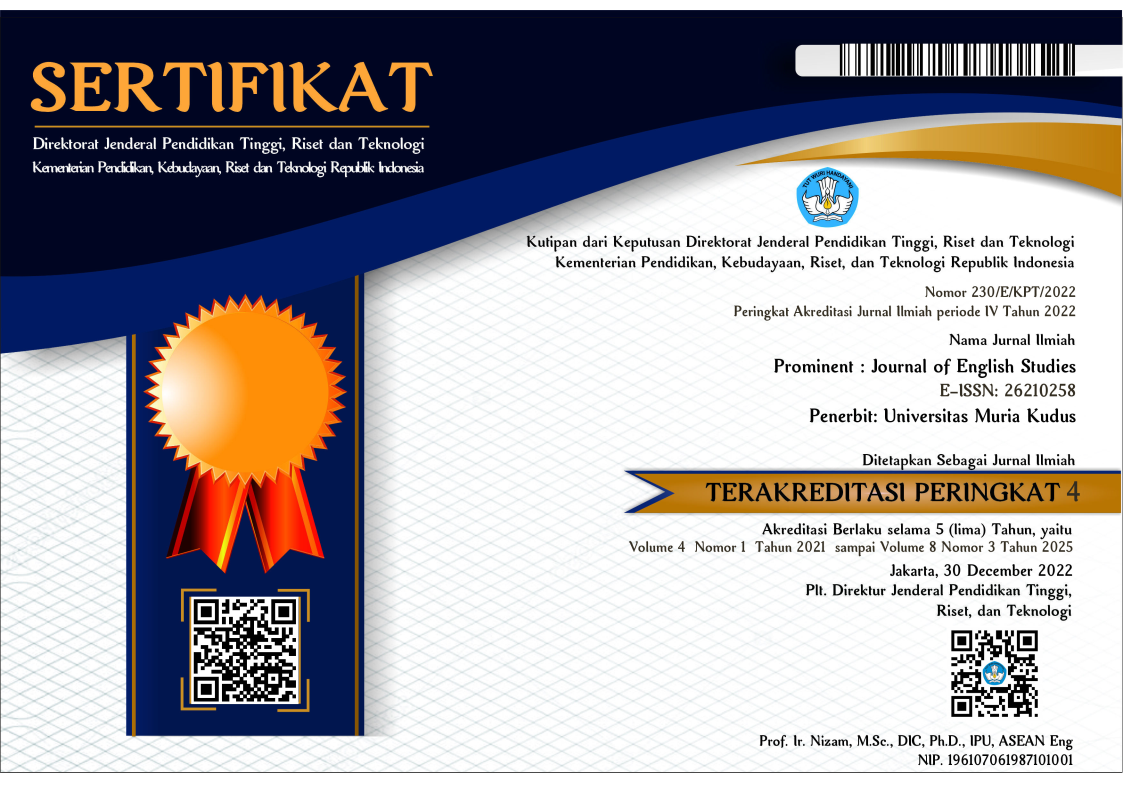The Use of Instagram as a Media to Teach Students' Writing Recount Text
Abstract
Full Text:
PDFReferences
REFERENCESAli, M. (1984). Penelitian Kependididikan Prosedur dan Strategi. Bandung: Angkasa Arikunto, S. (1997). Prosedur Penelitian: Suatu Pendekatan Praktek Edisi Revisi II. Jakarta: Rineka Cipta Akhiar, A. Mydin, A. and Kasuma, S. A. A,. (2017). Students’ perceptions and attitudes towards the use of Instagram in English language writing. Malaysian Journal of Learning and Instruction (MJLI), Special issue on Graduate Students Research on Education, 47-72 Barwick, J. (1999). Targeting text. Singapore: Blake Education. Brown, H. D. (2003). Language Assessment: Principles and Language Practices. California: Longman. Burns, A. (2010). Doing Action Research in English Language Teaching. New York and London: Routledge Handayani, F. (2017). Students’ Attitudes toward Using Instagram In Teaching Writing. JURNAL EDUCATIVE: Journal of Educational Studies. 2 (1), 23-29 Healey, J. E. (2005). Statistics. Carolina: Carolina Press Jiménez-López, M. D. and Rodríguez-Campillo, M. J. (2016). Social Media as a Tool for Teaching Writing. Retrieved from https://library.iated.org/publications/INTED Listiani, G. (2016). The Effectiveness of Instagram Writing Compared to Teacher Centered Writing to Teach Recount Text to Students with High and Low Motivation. Journal of English Language Teaching, ELT FORUM. 5 (1), 1-8 Moreau, E. (2018). What is Instagram, Anyway? Retrieved from https://www.lifewire.com/what-is-instagram-3486316 Nunan, D. (1991). Language Teaching Methodology. Sydney: Practice Hall Purnama, A. D. (2017). Incorporating Memes and Instagram to Enhance Student’s Participation. LLT (Language and Language Teaching Journal). 20 (1), 1-14 Rouse, M. (2018). DEFINITION Instagram. Retrieved from https://searchcio.techtarget.com/definition/Instagram Savini, A. (2017). #Instaclass: 8 Ideas for Using Instagram in the Classroom. Retrieved from http://www.cambridge.org/elt/blog/2017/05/04/8-ideas-using-instagram/ Sugiyono. (2015). Metode Penelitian Pendidikan. Bandung: Alfabeta Yadegarfar, H and Simin, S. (2016). Effects of Using Instagram on Learning Grammatical Accuracy of Word Classes among Iranian Undergraduate TEFL Students. International Journal of Research Studies in Educational Technology. 5 (2), 49-60.
DOI: https://doi.org/10.24176/pro.v2i2.3881
Refbacks
- There are currently no refbacks.
Prominent Journal of English Studies is licensed under a Creative Commons Attribution-ShareAlike 4.0 International License.
Dedicated to:

in Collaboration with APSPBI:





